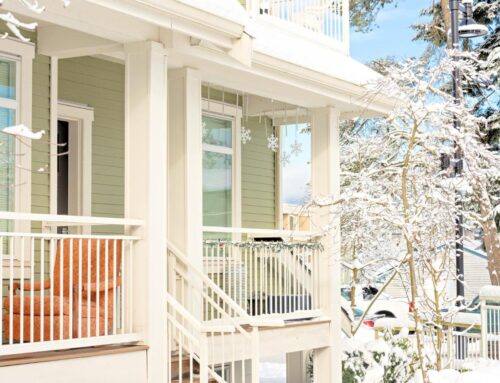Short days, long nights.
The fall has made way for the winter, and if you’re like most people, you’re probably worried about rising energy costs during this chilly time of year.
During the wintery months, many homeowners don’t consider that numerous parts of their homes might be allowing cold air to enter, and that these parts can actually be sealed up to save you money.
Air leaks around windows and doors are particularly to blame for higher hydro costs, and that’s why it’s essential to test for air leaks before the temperatures drop even more. Here are 4 simple ways to measure the quality of insulation in your home:
Conduct a visual inspection
Before you start really testing for air leaks around windows and doors, you’ll want to thoroughly investigate the interior and exterior of your entire home for possible openings, cracks, and failure of caulking materials. This will enable you to paint a clear picture in your mind’s eye of possible weak links in the chain contributing to your rising energy costs.
On the outside of your home, carefully investigate all the areas where different building materials meet for possible openings, such as:
- Corners
- Outdoor faucets
- Chimneys and siding
On the inside, you’ll want to inspect:
- Window and door frames (it’s crucial to check for dirt or debris in frames)
- Electrical outlets
- Gas entrances
- Cable and phone lines
- Vents and fans
In addition to looking for gaps, use your hands to feel around suspected areas to further test whether it is colder than other parts in the house.
Blow smoke
You will need:
- a lighter
- candle or stick of incense
To begin the smoke test, you must close all your windows and doors, and switch off all fans or anything else that might be moving air in your home. Light either your candle or incense stick, and move it carefully around the frames, trying as best you can to keep the flame vertical.
If you notice the flame or smoke moving in a horizontal direction toward the outside of your home, then you’ve got an air leak on your hands. Repeat this process with all window and doors in your home, remembering to check frames for dirt and debris that might be causing gaps for cold air to enter.
Buy an air leak detector
An air leak detector, otherwise known as an infrared thermometer, can measure the ambient air temperatures around your windows and doors. The thermometer indicates the areas in your home where a colder temperature is present, enabling you to pinpoint where a leak might be coming from.
In order to reduce your energy costs, check out our winter windows and doors checklist which will show how to correctly insulate your home and prepare for the frigid temperatures ahead.
If you notice that your windows and doors are still causing air leaks after attempts to seal and insulate them, then it might be time to replace windows or doors for a more energy efficient alternative that will pay for itself in savings over time.
Got more questions about air leaks and/or saving money on your Ontario hydro bill? Feel free to contact Casa Bella at 1-800-407-9917.



